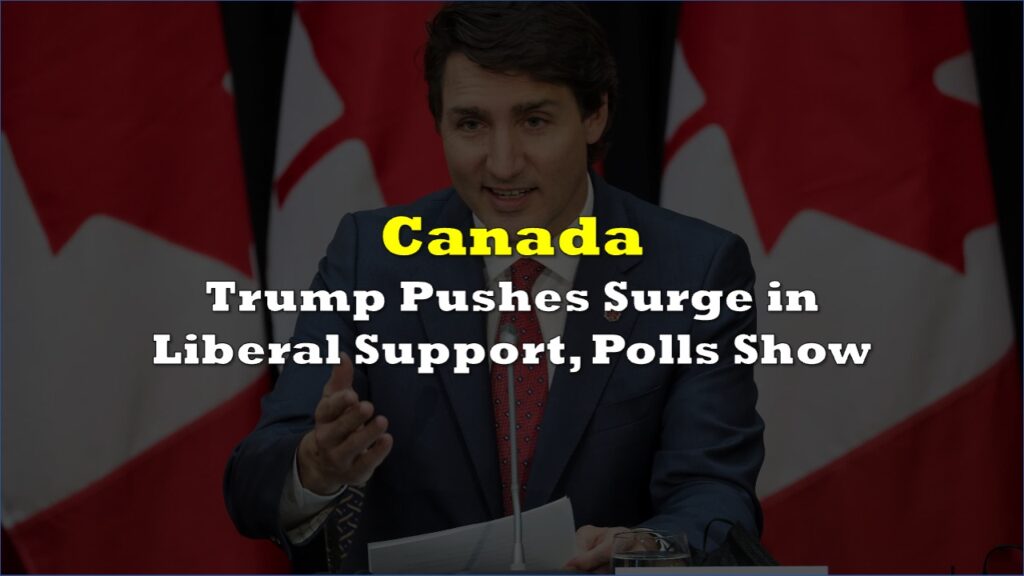The Liberal Party has unveiled its costed election platform with sweeping promises and staggering numbers: $130 billion in new spending over four years, deficits climbing as high as $62.3 billion, and a commitment to bring Canada’s finances back to balance—eventually—by relying on undefined savings and optimistic economic multipliers.
Major funding is earmarked for housing, infrastructure, digital transformation, childcare, youth employment, healthcare, Arctic development, and green transition programs. In year one alone, the Liberals plan to spend over $35 billion in new investments, which moves to more than $31 billion by 2028-29. These include multibillion-dollar commitments such as the Canada Strong Pass, the Nation-Building Project Fund, billions for Arctic and Indigenous infrastructure, as well as military spending that would increase annually until reaching $6.75 billion in new defense operating investments by 2028-29.
But as the platform lays out a massive spending roadmap, its fiscal framework immediately invites skepticism. The projected deficits rise from $46.8 billion in the PBO’s baseline for 2025-26 to $62.3 billion under the platform’s assumptions. Deficits remain above $50 billion until at least 2027-28 and are only projected to dip below that in the final year—still coming in at $47.8 billion. Even under what’s called the “upside scenario” in the platform, the deficit-to-GDP ratio remains in the red, landing at -0.95% by 2028-29.
Yet in an accounting move that has raised eyebrows, the Liberals distinguish between “operating” and “capital” deficits—claiming that by excluding long-term investments from the operating budget, they will achieve a slim surplus of $222 million by 2028-29.
🚨Liberals release costed election platform🚨
— Canada Spends (@canada_spends) April 19, 2025
➡️ $130B in new spending over 4 yrs
➡️ $28B in undefined spending cuts
Projected deficits:
2025-26: $62.3B
2026-27: $59.9B
2027-28: $54.8B
2028-29: $47.8B
Reminder of past deficits:
2024-25: $48.3B (projected, as per FES)… pic.twitter.com/80p6p0V2ET
Here is the Mark Carney Liberal's costed platform.
— Kirk Lubimov (@KirkLubimov) April 19, 2025
You can now put a side the talking points that he is some kind of a "pragmatist" and building maverick because this couldn't be farther from it.
This looks like something a financially illiterate intern put together on Canva.… pic.twitter.com/TLbYWU1FF7
Former finance advisor and economist Jean Philippe Fournier called the platform “fiscally dangerous,” warning that this framework could lead to Canada losing its AAA credit rating.
“Their $250 billion in new spending will still add to the debt. You just won’t see it. Canada, in its current state, can’t afford this,” he wrote on social media.
I read the liberal platform. I know a thing or two about govt budgets having worked for a Finance minister.
— Jean Philippe Fournier (@JeanPFournier) April 19, 2025
This plan will lead to Canada losing its AAA credit rating.
Markets were expecting (wrongfully) something serious to come from an ex-central banker. They were wrong.
And…
Later on, it was revealed in an interview that the plan was allegedly finalized before Mark Carney officially came on board—what Canadians are seeing is still “Justin Trudeau’s platform with a few tweaks.”
WTF 😳
— Marc Nixon (@MarcNixon24) April 20, 2025
It’s just been disclosed, the liberal platform was finalized before Mark Carney. It’s Justin Trudeau’s platform with a little bit of tweaks.
pic.twitter.com/uRtRI3VpV7
The largest single offset for the first year is a projected $20 billion in new revenue from a “tariff response” to the US. While positioned as a retaliation measure, this is effectively a tax on Canadian consumers, who will absorb the higher costs of imported goods. Additional savings are also promised from increased fines and penalties, and improvements in public sector productivity—amounting to $28 billion in expected savings across four years.
The Liberal platform envisages additional revenue of $20 billion to be raised from tariffs on American goods in the year 2025-26.
— Darshan Maharaja (@TheophanesRex) April 19, 2025
Let it not be lost amidst the cacophony that this means Canadians will be TAXED MORE by $20 billion in one year.
Because we don’t pay enough taxes.
Another point of contention is the platform’s assumption that government spending will yield increasingly strong economic returns. In a rare moment of candor, the platform admits that the fiscal multipliers on current spending are below 1.0—meaning every dollar the government spends results in less than one dollar of GDP growth. This directly contradicts the Liberals’ own projections from 2016, which estimated multipliers as high as four.
Candid admission in the Liberal platform: there is no "multiplier" effect to government spending. That is, the multiplier for every category of spending is currently less than 1, meaning not only that a dollar of government spending does not lead, as often claimed, to many times… pic.twitter.com/U23OxApUlt
— Andrew Coyne 🇺🇦🇮🇱🇬🇪🇲🇩 (@acoyne) April 19, 2025
Conservative MP Michael Chong noted that the deficits “get worse rather than get better—and they’re already pretty serious.”
“Carney’s Liberals are upping spending as Trudeau’s Liberals did. Same policies, same results,” Chong added.
Ibbitson, Globe & Mail, rates the Liberal platform:
— Michael Chong 🇨🇦 (@MichaelChongMP) April 19, 2025
"The deficits get worse rather than get better and they're already pretty serious"
Carney’s Liberals are upping spending as Trudeau’s Liberals did. Same policies, same results.
Time for change.
Vote Conservative.#cdnpoli pic.twitter.com/c6MAH2a36E
How Do I Balance Thee?
Observers also took issue with the lack of long-term economic strategy, detailing the potential revenue pipeline to finance the proposed budget plan. The absence of energy policy in a country still reliant on oil and gas exports did not go unnoticed.
$130bn of spending? That’s the plan?
— Mark Mulroney 🇨🇦 (@markmulroney) April 19, 2025
No new pipelines to give us some line of sight on how we will ever work our way out of this crippling debt hole? Where will new revenue come from? Taxes.
What kind of 🇨🇦 are we leaving behind for our kids and grandkids? I honestly don’t…
Can’t seem to find pipelines, oil, gas or LNG in the Liberal sections on the economy and major projects. We’ve got “nation-building” hydrogen in AB and solar in SK though! 🙃
— Heather Exner-Pirot (@ExnerPirot) April 20, 2025
Honestly pipelines and LNG couldn’t be more popular yet they’re still hedging 📉https://t.co/A7yMLJDBxG pic.twitter.com/KdZgtCgWBV
Despite being marketed as the product of an economist’s steady hand, the platform’s reception suggests otherwise. A journalist reportedly challenged Carney on the fact that, based on his numbers, Canada would still be more than $60 billion in the red. His response—encapsulated by “I know, I’m an economist”—was met with derision.
A CTV analyst pored into the plan and found that “there is no path to balancing the budget.”
The Liberal’s have hailed Mark Carney as:
— An Oil Exec (@CanadianOilExec) April 20, 2025
“The economist”
“The rockstar banker”
“The man with the resume and a plan”
CTV, did an analysis of his plan. The findings?
“There is no path to balancing the budget” pic.twitter.com/c1J0faVfsd
Carney gets called out for a gaping flaw in his costed platform by a journalist.
— An Oil Exec (@CanadianOilExec) April 19, 2025
“Based on your platform, Canada would still be more than 60 billion dollars in the red.”
Carney’s response? Don’t worry “I’m an economist”. pic.twitter.com/tlaCdGKGwt
This is not a return to the Chrétien-Martin era we were being sold. Disappointing is an understatement given how important it is to get our fiscal mess under control https://t.co/uUkDkdeWKo
— David Clement 🌐 (@ClementLiberty) April 19, 2025
The backlash was intense enough that the platform was reportedly quietly removed from the Liberal Party website just days after its release. Observers speculate this may have been a damage control move, as coverage and commentary turned overwhelmingly critical. The webpage has since been reactivated, with the full costing plan available here.
The Liberal platform, complete with costing, has already been taken down. It got too much flack from every media outlet in the country.
— Martyupnorth®- Unacceptable Fact Checker (@Martyupnorth_2) April 19, 2025
Carney is proposing to run $100+ billion deficits for the next 3 years.
His platform is even worse than Trudeau's pic.twitter.com/dEJcaYf5S3
Information for this briefing was found via the sources mentioned. The author has no securities or affiliations related to this organization. Not a recommendation to buy or sell. Always do additional research and consult a professional before purchasing a security. The author holds no licenses.









